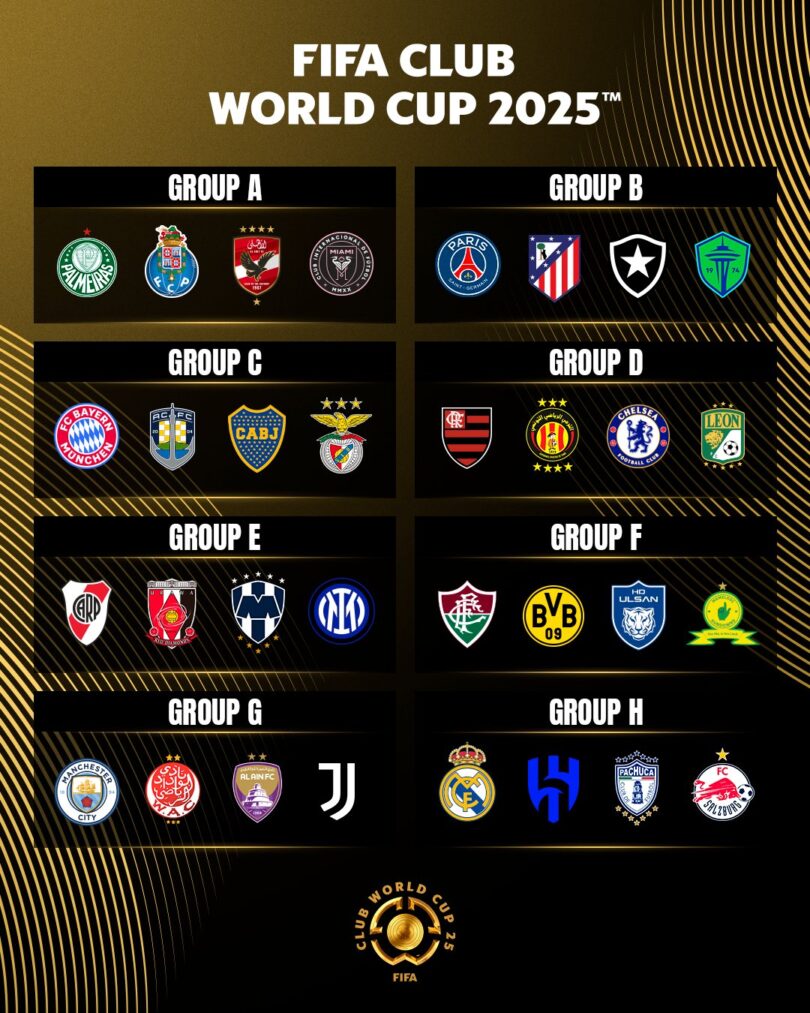The FIFA Club World Cup is set to reach a new pinnacle in 2025, with its expanded format officially unveiled alongside the much-anticipated draw for the tournament. For the first time in its history, the competition will feature 32 teams, a structure reminiscent of the FIFA World Cup, aiming to bring club football’s global showcase to an even wider audience. With the teams and groups now revealed, excitement is already building for what promises to be one of the most competitive editions of the tournament to date.
A New Era for the FIFA Club World Cup
The 2025 edition marks a seismic shift in the history of the Club World Cup. Previously contested by just seven teams—the champions of each confederation and the host nation’s domestic champion—the tournament’s expansion to 32 clubs represents FIFA’s vision to enhance the global appeal of club football. This format ensures a broader representation of the world’s top clubs, giving more teams the opportunity to compete on the grand stage.
FIFA President Gianni Infantino has been a key proponent of the expansion, stating that it aligns with the organization’s mission to make football truly global. “This is a tournament for the fans, for the players, and for the clubs. We are taking the next step in uniting the world through the beautiful game,” Infantino said during the draw ceremony.
The Teams and Groups
The draw for the 2025 FIFA Club World Cup has placed the participating teams into eight groups of four, each consisting of clubs from different confederations. This ensures a mix of styles and regional diversity, setting the stage for intriguing matchups. Here’s a breakdown of the groups:
Group A
- Real Madrid (Spain): The most decorated club in European football history will lead Group A, aiming to extend their dominance on the global stage.
- Al Ahly (Egypt): The African giants bring a wealth of experience to the competition, representing CAF.
- Tigres UANL (Mexico): CONCACAF’s representative and 2020 finalists return with high hopes.
- Melbourne City (Australia): A rising force from the AFC, aiming to make their mark.
Group B
- Manchester City (England): Fresh off their UEFA Champions League triumph, City is a favorite to lift the trophy.
- Palmeiras (Brazil): The reigning Copa Libertadores champions add flair and pedigree from CONMEBOL.
- Guangzhou FC (China): Once a powerhouse in Asia, Guangzhou will aim to reclaim their former glory.
- Esperance de Tunis (Tunisia): A consistent CAF contender, known for their gritty performances.
Group C
- Bayern Munich (Germany): The Bundesliga champions bring their usual firepower and tactical discipline.
- Seattle Sounders (USA): The first MLS team to win the CONCACAF Champions League, they will represent North America.
- Yokohama F. Marinos (Japan): Japan’s champions carry Asia’s hopes in a tough group.
- Al Hilal (Saudi Arabia): A perennial force in AFC competitions, they aim to challenge for the title.
Group D
- Paris Saint-Germain (France): The star-studded French club seeks to add a Club World Cup to their growing trophy cabinet.
- River Plate (Argentina): A South American powerhouse, River Plate is always a team to watch.
- Wydad Casablanca (Morocco): A strong African representative, known for their passionate fan base.
- Monterrey (Mexico): Another CONCACAF giant, looking to outshine their regional rivals.
The remaining groups (E-H) feature similar diversity and balance, with teams like Inter Milan, Flamengo, Chelsea, and Raja Casablanca completing the lineup. The draw has ensured that no group can be taken lightly, with each team having a realistic shot at progressing.
Format and Stakes
The tournament’s format will see each group’s top two teams advance to the knockout stage, starting with the Round of 16. From there, it’s a single-elimination pathway to the final. This setup raises the stakes for every group-stage match, as no team can afford to start slowly in such a competitive environment.
The expanded Club World Cup also comes with significant rewards. Beyond the prestige of being crowned world champions, the financial incentives are enormous, with FIFA allocating substantial prize money to encourage top-tier participation. For many clubs, it’s a chance to solidify their global reputation and connect with fans across continents.
Anticipation and Challenges
While the expanded format has been met with enthusiasm, it also presents challenges. The increased number of matches could place a strain on player workloads, especially for clubs with congested domestic and continental schedules. Additionally, questions remain about the logistics of hosting such a large-scale event, including travel demands and venue suitability.
Despite these concerns, the 2025 FIFA Club World Cup promises to be a landmark event for football. Fans can look forward to thrilling clashes between some of the world’s most storied clubs and rising stars. The tournament will not only celebrate the global nature of the sport but also create new rivalries and unforgettable moments on the world stage.







